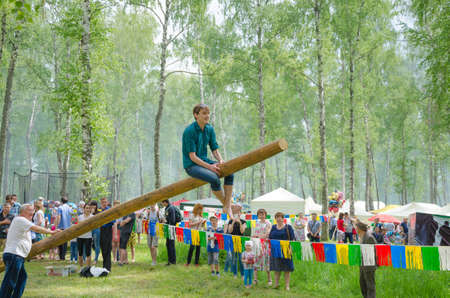Introduction to Nagaland Hills and Its People
Nestled in the far northeast of India, the Nagaland Hills present a stunning tapestry of rolling green landscapes and vibrant cultures. Home to more than 16 major tribes, including the Angami, Ao, Sumi, Konyak, and Lotha, this region stands out for its unparalleled ethnic diversity. Each tribe speaks its own language or dialect and upholds distinct customs that have been carefully preserved through generations. The Naga people are renowned for their warm hospitality and deep-rooted respect for nature, which is evident in every aspect of their daily life. Over centuries, the rugged terrain and relative isolation of the Nagaland Hills have shaped a unique cultural landscape where age-old folk traditions continue to thrive. Festivals here are not just celebrations; they are vibrant expressions of identity, unity, and reverence for ancestral heritage. With every festival season, the hills come alive with music, dance, colourful attire, and rituals that showcase the indomitable spirit of Nagaland’s communities.
Major Festivals Celebrated in Nagaland
Nagaland, nestled in the hills of Northeast India, is renowned for its vibrant festivals that reflect the rich folk traditions and deep-rooted agricultural heritage of the Naga people. Each major festival is a living expression of community spirit, tribal unity, and gratitude to nature. Among the numerous celebrations, the Hornbill Festival, Moatsu, and Sekrenyi stand out as key events that not only unite the diverse Naga tribes but also preserve their age-old customs and values.
Hornbill Festival: The Festival of Festivals
The Hornbill Festival, held annually in December at Kisama Heritage Village near Kohima, is considered the “Festival of Festivals” in Nagaland. Organised by the State Government to promote inter-tribal interaction and showcase Naga culture, this event brings together all sixteen major tribes. Visitors can witness traditional dances, folk songs, indigenous games, handloom exhibitions, and local cuisine. The Hornbill Festival plays a crucial role in preserving cultural identity and boosting tourism in Nagaland.
Moatsu: A Celebration of Community Bonding
The Ao tribe celebrates Moatsu after the sowing season in May. This festival marks a period of relaxation and merrymaking after hard work in the fields. During Moatsu, villagers engage in singing, dancing, feasting, and brewing rice beer known as Zutho. It fosters social harmony, strengthens communal ties, and gives thanks for a bountiful harvest. Moatsu is also an opportunity for matchmaking and renewing friendships among the Aos.
Sekrenyi: Rituals of Purification and Renewal
Sekrenyi is an important festival of the Angami tribe observed in February. It is a ten-day event centred on rituals of cleansing and purification to ensure good health and prosperity for the coming year. Traditional ceremonies such as ‘Thekra Hie’ (feast of merit), communal prayers, and folk performances are integral parts of Sekrenyi. The festival underlines the significance of unity, moral discipline, and respect for elders within Angami society.
Overview of Major Festivals
| Festival Name | Main Tribe(s) | Month Celebrated | Cultural Significance |
|---|---|---|---|
| Hornbill Festival | All Tribes | December | Showcase of Naga heritage; promotes unity and tourism |
| Moatsu | Ao Tribe | May | Community bonding; post-sowing thanksgiving |
| Sekrenyi | Angami Tribe | February | Cleansing rituals; renewal for prosperity |
Nagalands festivals are much more than colourful displays—they are essential to social structure, agriculture-based livelihoods, and preservation of indigenous knowledge systems. By participating in these celebrations, both locals and visitors gain a deeper appreciation for Naga resilience and hospitality while ensuring that these cherished traditions continue to thrive safely for future generations.

3. Traditional Folk Music and Dance Forms
The vibrant festivals of Nagaland Hills are incomplete without the rhythmic beats of indigenous music and the graceful movements of traditional dance forms. The local tribes, such as the Angami, Ao, and Sumi, cherish a wide array of folk songs and dances that have been passed down through generations. These art forms are not just performances but serve as powerful mediums for storytelling, expressing legends, histories, and moral values of the community.
Musical Instruments Rooted in Tradition
Naga folk music features unique instruments crafted from locally available materials. The bamboo mouth organ, known as Bamhum, and the log drum called Kong, are central to many celebrations. Each tribe has its own distinctive musical instruments—such as the Tati (single-stringed instrument) or bamboo flutes—that produce melodious tunes echoing across the hills during festivals. These instruments play an essential role in uniting the community, with their sounds calling people together to celebrate or mark significant events.
Dance Performances: Expressions of Culture
Dance performances during festivals like Hornbill Festival, Sekrenyi, and Moatsu Mong are not merely entertainment; they are vital expressions of identity and unity. Dancers wear colourful traditional attire adorned with beads and feathers, moving in synchrony to narrate folktales or dramatize hunting scenes and agricultural cycles. For instance, the War Dance performed by several Naga tribes symbolises bravery and is often presented to inspire courage among youth.
Community Bonding through Music and Dance
Participation in these musical and dance traditions fosters a sense of togetherness and belonging among the people of Nagaland Hills. Every member, young or old, is encouraged to join in communal singing or dancing, breaking barriers and strengthening social ties. Through these collective experiences, values such as respect for elders, teamwork, and cultural pride are reinforced—ensuring that tradition remains alive in the hearts of every generation.
4. Symbolic Rituals and Ceremonies
The Nagaland Hills are renowned for their vibrant festivals and deep-rooted folk traditions, many of which revolve around symbolic rituals and ceremonies. These practices serve as powerful reminders of the communitys values, beliefs, and social cohesion. Among the most prominent rituals are those related to head-hunting—an ancient tradition that, while no longer practised, remains a significant part of local folklore and identity. The head-hunting ceremonies were not merely about warfare but symbolised bravery, status, and the protection of the tribe. Stories and dances performed during festivals such as Sekrenyi (Angami tribe) or Moatsu Mong (Ao tribe) often recall these heroic acts, educating younger generations about their heritage in a safe and respectful manner.
Another vital aspect is the harvest rituals, which express gratitude to nature and ancestral spirits for a bountiful yield. These ceremonies are marked by community feasts, music, and traditional attire. They also foster unity among villagers and reinforce the importance of sharing resources. Below is a table highlighting some key symbolic rituals and their meanings across various Naga tribes:
| Tribe | Festival/Ceremony | Symbolic Meaning |
|---|---|---|
| Angami | Sekrenyi | Purification & renewal; celebrates courage and community bonds |
| Ao | Moatsu Mong | Thanksgiving for a good harvest; strengthens village unity |
| Konyak | Aoleang Monyu | Marks New Year & honours ancestors; includes head-hunting dance reenactments |
| Sumi | Tuluni | Celebrates abundance; promotes harmony through communal feasts |
Through these rich traditions, the people of Nagaland Hills maintain a living connection with their past while adapting to contemporary values. The ceremonial rituals offer insight into indigenous philosophies, particularly respect for nature, reverence for ancestors, and collective responsibility—values that continue to shape Naga society today.
5. Artisanal Crafts and Tribal Dress
The vibrant culture of Nagaland Hills is deeply reflected in its artisanal crafts and traditional tribal dress, which play a central role during festivals and daily life alike. Handloom weaving stands as one of the most important skills passed down through generations, especially among women. Each tribe has unique patterns, colours, and motifs woven into shawls, wraps, and skirts, signifying their identity and social status. These textiles are not only utilitarian but also serve as cherished symbols during major celebrations such as Hornbill Festival.
Beadwork is another remarkable craft practised across the region. Local artisans create intricate necklaces, headbands, and armlets using colourful beads and natural materials. These adornments are more than just accessories; they represent clan affiliations, marital status, and even achievements within the community. The making of beadwork is often a communal activity, strengthening bonds among women and young girls while preserving ancestral techniques.
Distinctive tribal attire forms an essential aspect of every festival in Nagaland. Men wear elaborate headgears adorned with feathers, tusks, and wild boar hair, while women don vibrant handwoven shawls paired with layered beaded jewellery. The attire not only enhances the festive atmosphere but also tells stories of bravery, prosperity, and belonging to a particular tribe. Wearing traditional dress is seen as a way to honour ancestors and maintain cultural pride in a rapidly modernising world.
The creative spirit behind these crafts underlines the resilience of Naga communities. In recent years, many local entrepreneurs and cooperatives have started promoting handloom products beyond the state’s borders, providing sustainable livelihoods for artisans. This effort supports cultural preservation while enabling economic growth within rural villages.
Through their commitment to handloom weaving, beadwork artistry, and distinctive tribal attire, the people of Nagaland Hills continue to showcase their heritage proudly during festivals. These practices offer visitors a deeper understanding of Naga identity while inspiring appreciation for indigenous creativity rooted in community values.
6. Community Participation and Social Harmony
The vibrant festivals of Nagaland Hills are not just celebrations, but powerful platforms that unite diverse tribes and communities across the region. In a land known for its multi-ethnic composition, these festivals play a crucial role in fostering unity among different Naga tribes. Through collective participation in rituals, traditional games, folk dances, and communal feasts, people from various backgrounds come together to honour their shared heritage.
Fostering Unity Among Tribes
Naga festivals such as Hornbill, Moatsu, and Sekrenyi encourage inter-tribal dialogue and collaboration. During these festive occasions, tribal boundaries are set aside, giving way to inclusive celebrations where everyone contributes and participates. Elders share wisdom through folk tales and songs, while youth engage in friendly competitions and cultural exchanges. Such interactions build bridges of understanding, helping reduce prejudices and strengthen social ties.
Promoting Mutual Respect
Respect for diversity is deeply embedded in Naga festival culture. Each tribe showcases its unique customs and attire with pride, while also appreciating the traditions of neighbouring groups. This mutual recognition is vital in promoting harmony in a society marked by linguistic and cultural plurality. By learning about each other’s beliefs and practices during festivals, people cultivate empathy and tolerance that extend well beyond festive days.
Strengthening Community Well-being
The communal nature of these events ensures that no one is left behind. Shared meals, cooperative decorations, and joint performances create a sense of belonging for all—regardless of age or social status. Festivals often include community service projects or collective prayers for prosperity, further reinforcing social solidarity. In times of hardship or change, the spirit of cooperation nurtured through these gatherings becomes a valuable resource for resilience and well-being among the Naga people.
Preserving Heritage in Contemporary Times
The rich folk traditions and vibrant festivals of Nagaland’s hills are treasures that require dedicated efforts for preservation, especially as the state embraces modernity. In recent years, both government bodies and community leaders have recognized the urgent need to safeguard the region’s cultural wealth from erosion. The Nagaland government has initiated several policies to promote indigenous arts, music, and dance, including the establishment of cultural centres and annual events like the Hornbill Festival. These platforms provide opportunities for local artisans and performers to showcase their heritage on national and international stages.
Youth Involvement: Bridging Generations
Youth involvement is crucial in ensuring that folk customs remain relevant in contemporary society. Many young people in Nagaland are now participating in revivalist movements, learning traditional crafts, and performing folk dances with pride. Educational institutions also include culture-based curricula to nurture a sense of identity among students. However, balancing tradition with modern influences remains a challenge as urbanisation and migration introduce new lifestyles.
Challenges in Safeguarding Traditions
Despite these positive efforts, several challenges persist. Economic pressures sometimes force families to prioritise modern livelihoods over traditional practices. Additionally, global media exposure often shifts the interests of younger generations away from ancestral art forms. There is also a risk of commercialising festivals, which can dilute their original significance.
The Way Forward
To secure the future of Nagaland’s festivals and folk traditions, ongoing collaboration between government agencies, local communities, and NGOs is essential. Initiatives such as grants for artists, digital documentation of oral histories, and intercultural exchange programmes can help keep the heritage alive. Most importantly, fostering pride among Naga youth ensures that their unique identity will not only survive but thrive amidst changing times.


